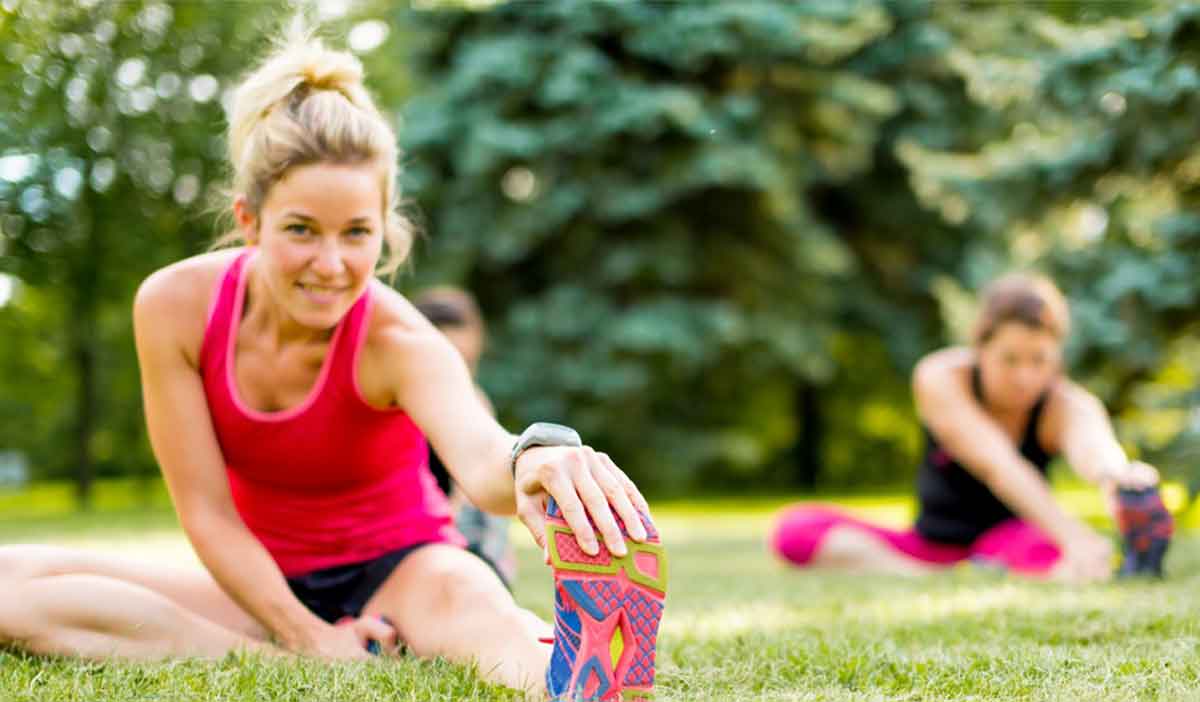We get it. In the real world, being too busy is one of the most common excuses for not getting in a workout. Balancing your schedule so that there’s time for regular exercise requires motivation and planning takes effort.
When your daily to-do list is extra packed, you might think the best way to save time – while sticking to your fitness routine – is to compromise by skipping the extra minutes required for warming up and cooling down. But before you do, think twice.
Whether you’re a dedicated gym rat or a recreational runner, these activities are essential for everyone to include as part of an overall workout program.

That’s because researchers have found that stretching and doing warm-ups helps you have a safer and more efficient workout by making your muscles more flexible to decrease injury risk while also minimizing stress on your heart.
Cool down exercises lower the shock your body experiences when transitioning back to its normal state after exercising. Specifically, cool downs aid your recovery by helping to lessen the risk of injury; minimize the risk of light-headedness, as well as feelings of fatigue; and reduce the potential of muscle, joint, and tendon aches and soreness.
Warm-ups
Begin each workout with up to fifteen minutes of light aerobic activity to gradually speed up your breathing and heart rate.
During this warm-up period, oxygenated blood pumps through your body as its core temperature rises. This process improves the elasticity of your muscles and joints. Or, to put it more simply, starter exercises gradually prep you for your actual workout and make it less likely that you experience joint issues, sprains, strains, or swollen muscles.
Unsure how to quickly add a warm-up to your workout? One straightforward strategy you can try to incorporate warm-ups into your workout plan is transitioning. To do this, start out by performing the same activity as you’ve planned to do for your workout but do it at a slower pace and lower intensity (e.g., walk briskly for 10-15 minutes before switching to a jog).
Pro-tip: Add extra time to your warm-up sessions during the winter months when temperatures drop and your muscles are tighter, making the potential for injury more likely.
Learn more tips for staying warm and safe when running during winter
Cool downs
At the end of your main workout, begin your cool down by gradually decreasing the intensity of your physical activity for about ten minutes. As a rule of thumb, the harder your main workout is, the longer your cool down should be. This will lower your heart rate, reduce recovery time, and help lower your risk of muscle soreness.
Exercising with a pre-existing injury? The cool down portion of your workout – while your muscles are still warm – is a great time to get in some stretches and complete any physical therapist-recommended physio exercises.
Reaching your goals
Regular exercise can help ward off many diseases, including Type 2 diabetes, osteoporosis, heart disease, strokes, and more. Be kind to your body by making sure to incorporate both warm-up and cool down activities as part of your workout to reduce your chance of pain and injury.
If you are thinking about beginning a new fitness journey, check in with your doctor for advice regarding any medical problems that might limit your activities (and, for referral to a certified athletic trainer who can help you create a safe and enjoyable plan you can stick with to reach your goals).




